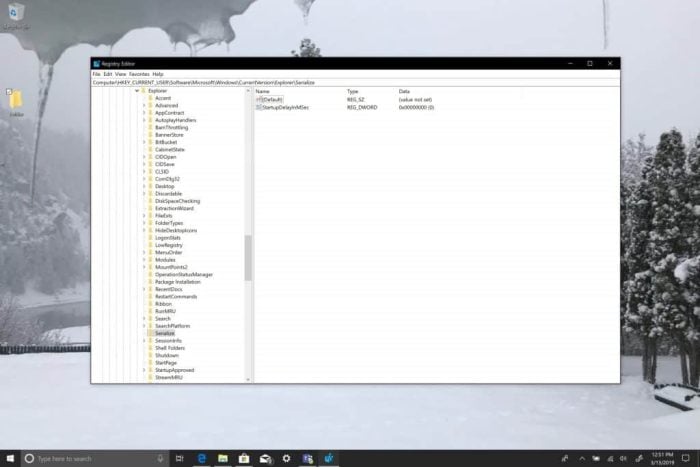How to revise Windows 10 Startup Delay to possibly speed up starting your computer
3 min. read
Published on
Read our disclosure page to find out how can you help Windows Report sustain the editorial team Read more

Windows 10 has a feature that waits approximately ten seconds to open your startup apps when your computer turns on. The “startup delay” is meant to allow your desktop and Windows app services to finish loading, which can make the apps and services run more smoothly. However, if you have apps or services you want to start up immediately when Windows 10 starts, there is a Registry edit you can use.
This Registry edit can reduce or disable the ten second startup delay completely. Unfortunately, it applies to all startup apps; you won’t be able to apply this edit to specific startup apps. It should be noted that this Registry edit works best on a Windows 10 PC that has an SSD (solid state drive). An SSD loads programs much quicker than a traditional HDD (hard disk drives). HDDs are better suited for mass storage and you can apply this Registry edit to a Windows 10 PC with an HDD, but you might not see much of a difference in how fast your startup apps load.
Here are the steps you need to take to edit your Windows Registry to make your PC load faster:
1. Open the Windows Registry Editor by going to the Start menu or search bar and typing “regedit” and choose Run as administrator.
2. Choose Yes when prompted by the UAC (User Account Control) prompt to make administrative changes to your Windows 10 PC.
3. Browse to the following Registry Key: HKEY_CURRENT_USERSoftwareMicrosoftWindowsCurrentVersionExplorerSerialize
4. If Serialize, does not exist, create a new Key in Explorer by right clicking on Explorer: New > Key (Name the Key: Serialize).
5. Within Serialize, create a new DWORD (32-bit) value and name it StartupDelayInMSec. Be sure to set the hexadecimal value to 0. It should be set to 0 by default.
This is how StartupDelayInMSec should look in Serialize in the Registry Editor.
6. Restart your computer for the changes to take effect.
You’re all done! Windows 10 Startup Delay is removed. Again, if your Windows 10 PC has an SSD, you should see a significant boost in your startup time. With HDDs, you might still not see much, if any, speed increase in your startup times. The boot time into Windows 10 also depends on how many apps and Windows services you have enabled for startup. If you have a lot of services enabled at startup, you may still see a slight speed increase in how long it takes for Windows 10 to start.













